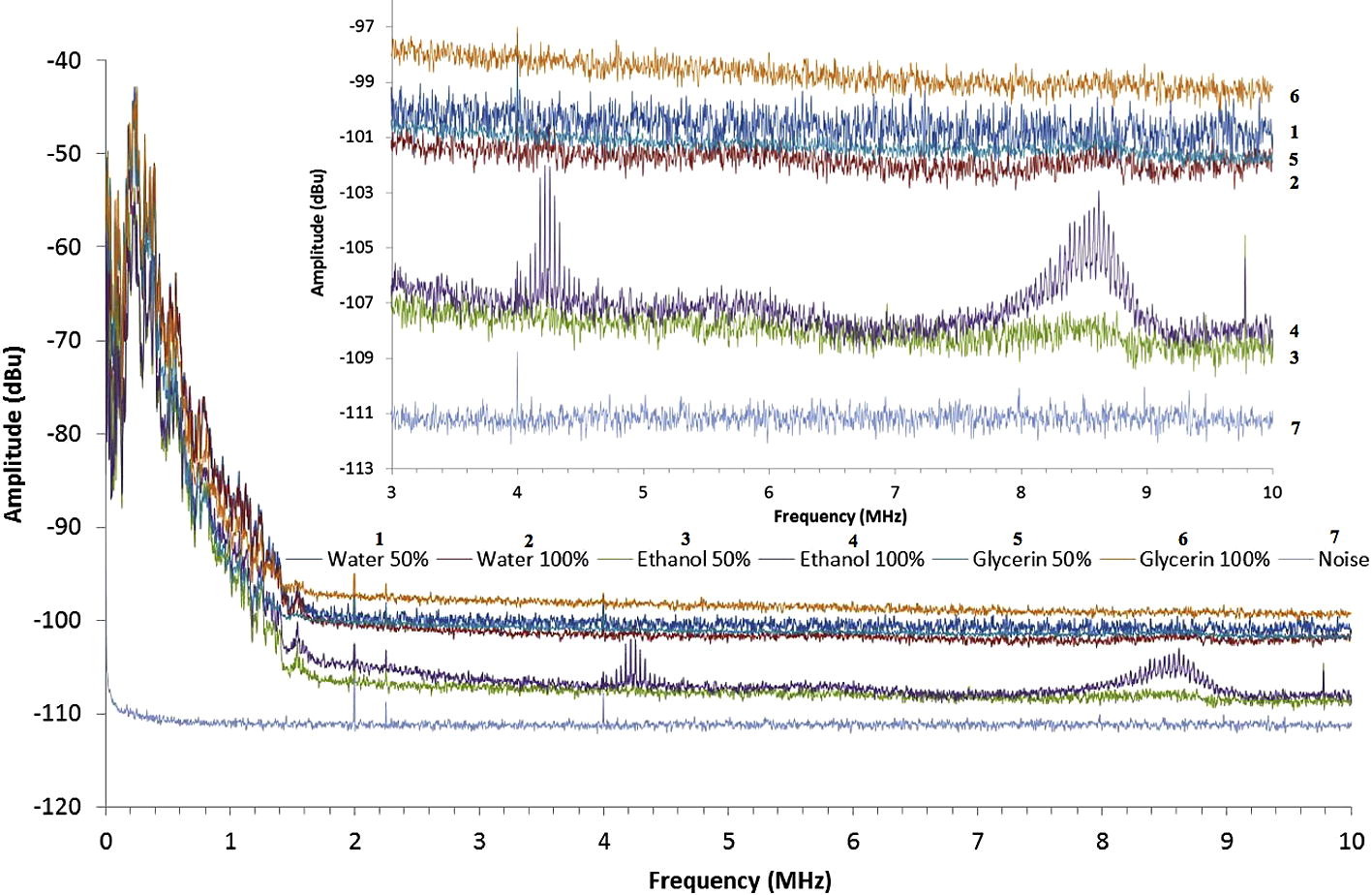Acoustic Spectrum

The frequency spectrum analysis provides substantial information on the characteristics of cavitation in a liquid volume. We have calibrated facilities to measure acoustic (cavitation) spectra in liquids and liquid metals up to 750 °C.
Key features of a typical acoustic spectra include:
sharp peaks corresponding to harmonics and ultra-harmonics of the acoustic driving frequency with further contributions from the non-linear dynamics of cavitation bubbles
sub-harmonics, that indicate the inception of cavitation regime, are suggestive of a cavitating system that is generating periodic shock waves over-imposed by the excitation of bubbles at sub-harmonic resonances
a continuous broadband component, commonly known as “white noise” or “cavitation noise”, which is linked to the occurrence of violent inertial cavitation at large acoustic intensities
Various liquids have been investigated under cavitation conditions with spectrum results showing that their physical properties play a decisive role in the establishment of the cavitation regime.
In a technological context, cavitation noise can serve as a metrological tool for cavitation activity in industrial systems of various scales where direct (optical) observation and analysis is not possible
